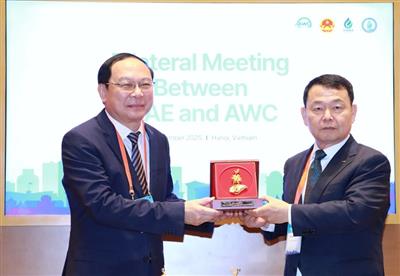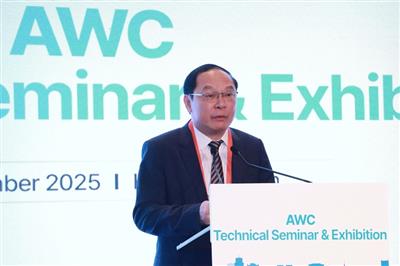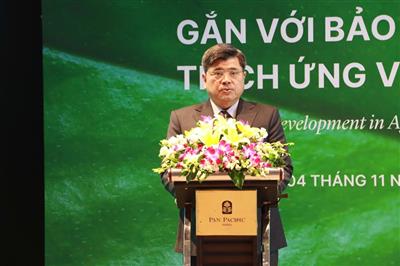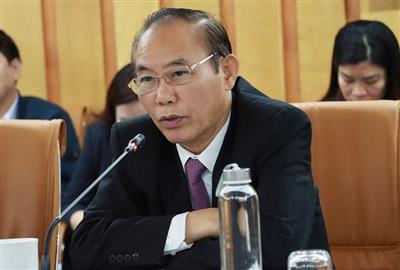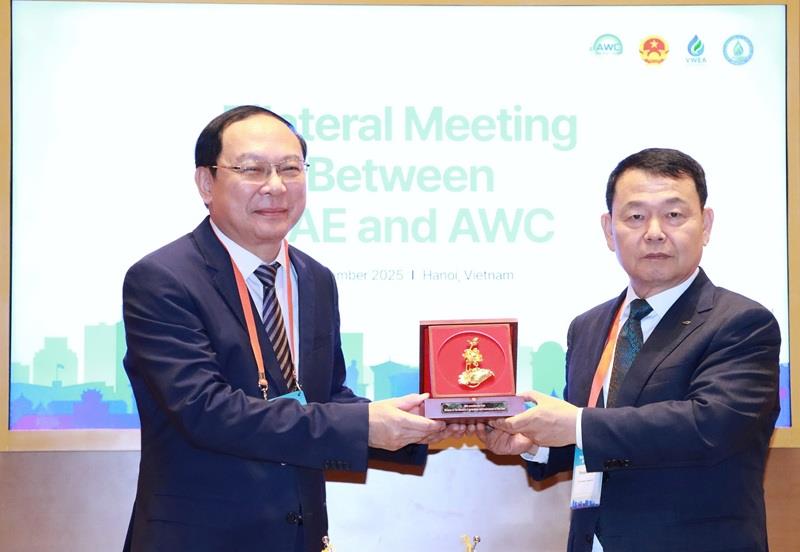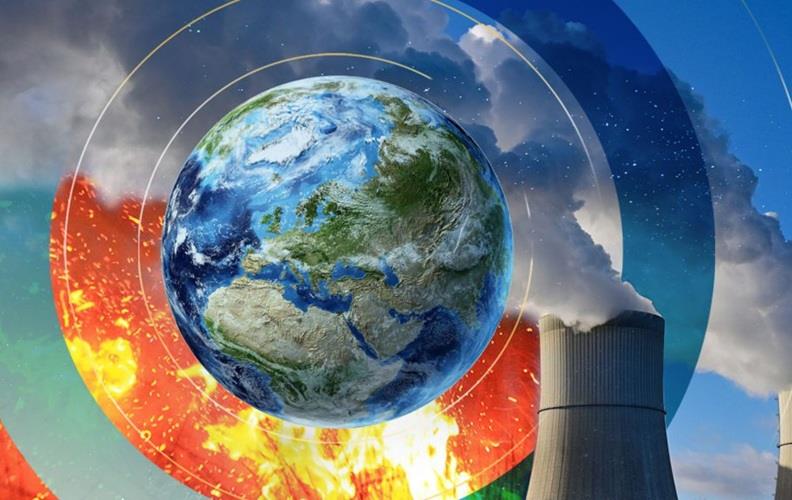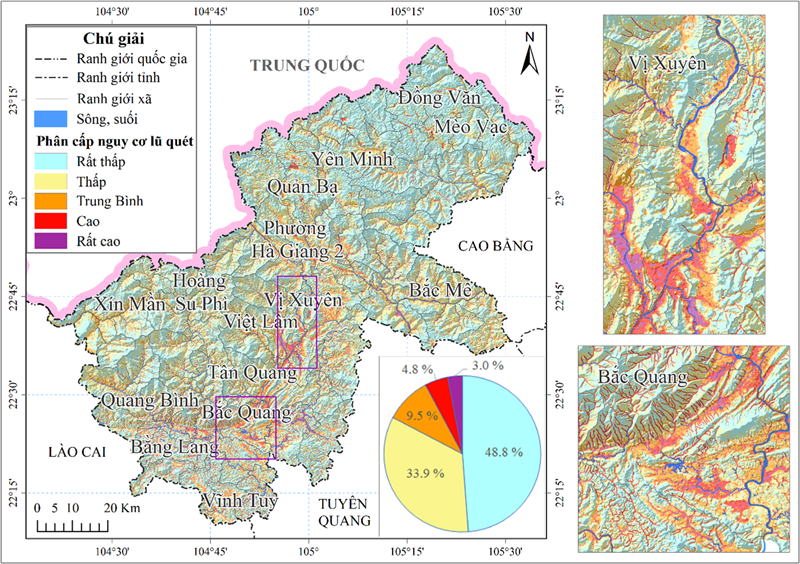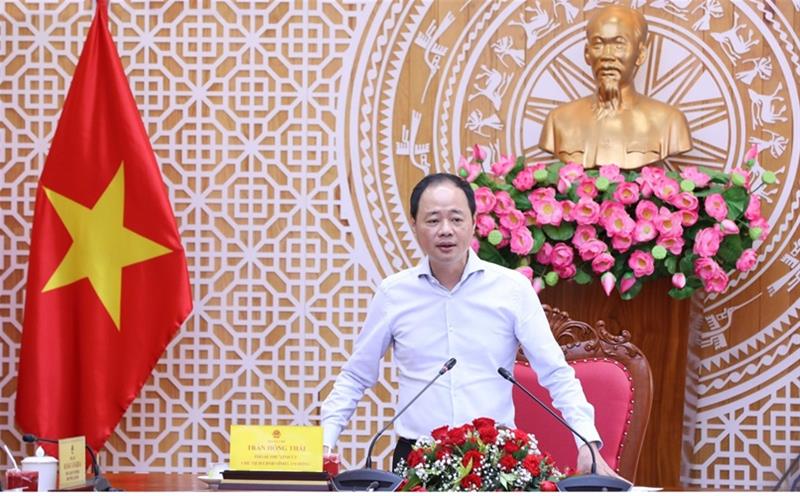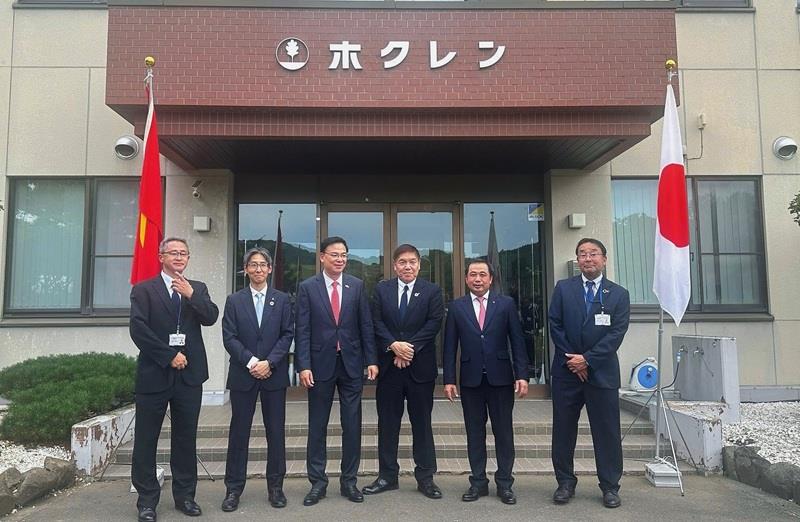
Science, technology and innovation: The key to green growth and low-emission development
17/10/2025TN&MTHeld in the context of Vietnam’s accelerated implementation of Resolution No. 57-NQ/TW on the development of science, technology, innovation, and national digital transformation, the national scientific conference titled “Breakthroughs in science and technology to drive Green transition and sustainable development” served as a key platform bringing together scientists, policymakers, and businesses. The event sought to propose breakthrough solutions and relevant international models, while also recommending policies to mobilize social resources for green growth and sustainable development.
On October 17, the Communist Party of Vietnam (CPV) Central Committee’s Commission for Information and Education, in coordination with the Ministry of Science and Technology and the Ministry of Agriculture and Environment, organized the conference in Quang Tri Province. The event played an important role in shaping a new development mindset, one that integrates economic growth with environmental protection, social progress, and human development.
Science, technology and innovation as the pillars of green growth
In his opening remarks, Deputy Minister of the Ministry of Agriculture and Environment Phung Duc Tien affirmed that the world is undergoing a profound transformation toward a green, low-carbon and sustainable economy. The Fourth Industrial Revolution, along with emerging trends such as artificial intelligence (AI), renewable energy, new materials, biotechnology, and digital transformation, is reshaping all aspects of economic and social life.
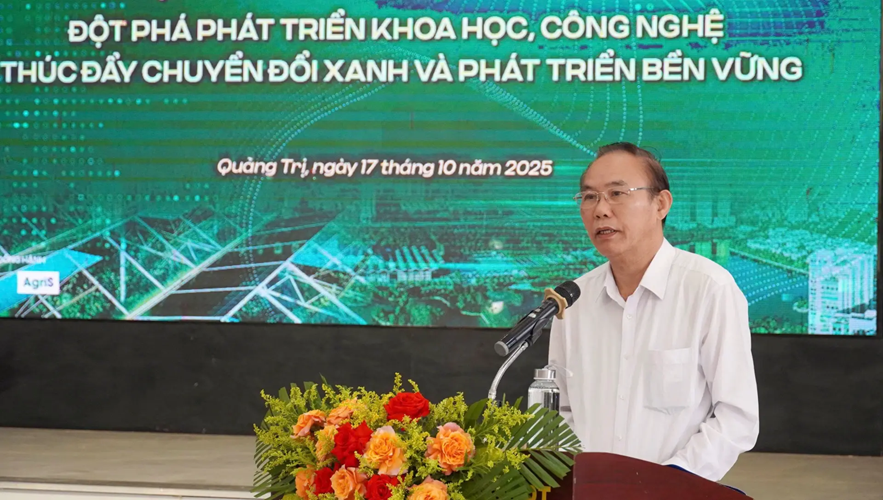
In this context, Resolution No. 57-NQ/TW issued by the Politburo on December 22, 2024, clearly defines science, technology, innovation and digital transformation as one of the strategic breakthroughs, serving as a driving force for green growth and sustainable development. These are regarded as prerequisites for realizing Vietnam’s international commitment to achieving net-zero emissions by 2050, while ensuring energy security, environmental security, and sustainable national development.
Deputy Minister Phung Duc Tien emphasized that the conference not only helped raise awareness about the role of science, technology and innovation, but also fostered concrete actions across all levels, sectors and business communities. “Awareness must be translated into unified action so that Resolution 57 truly comes to life, becoming the driving force to realize the aspiration for a green, modern and sustainable Vietnam,” he said.
Building an innovation ecosystem through science, technology breakthroughs and the “Triple helix” model
Developing an innovation ecosystem is seen as a critical prerequisite for Vietnam to successfully achieve green transition and sustainable development. This ecosystem is built upon the foundation of science, technology and innovation, where businesses play the central role, research institutes and universities provide intellectual resources, and the State acts as the facilitator, providing institutional and policy support.
According to Tran Quoc Cuong, Director of the Department of Social, Humanities and Natural Sciences under the Ministry of Science and Technology, stronger linkages among key actors, from research, incubation to commercialization, will generate technological breakthroughs, new cooperation models, and high value-added products. These, in turn, will help shape a competitive and resilient green economy as the world moves toward sustainable development.
Currently, Vietnam has more than 4,000 innovative start-ups, including two unicorns and 11 firms valued over USD 100 million, supported by over 1,400 start-up support organizations, 202 co-working spaces, 208 investment funds, and 35 business accelerators. Notably, around 200–300 start-ups (5–7 %) are engaged in the green transition, focusing on renewable energy, environmental technologies, sustainable agriculture, and the circular economy.
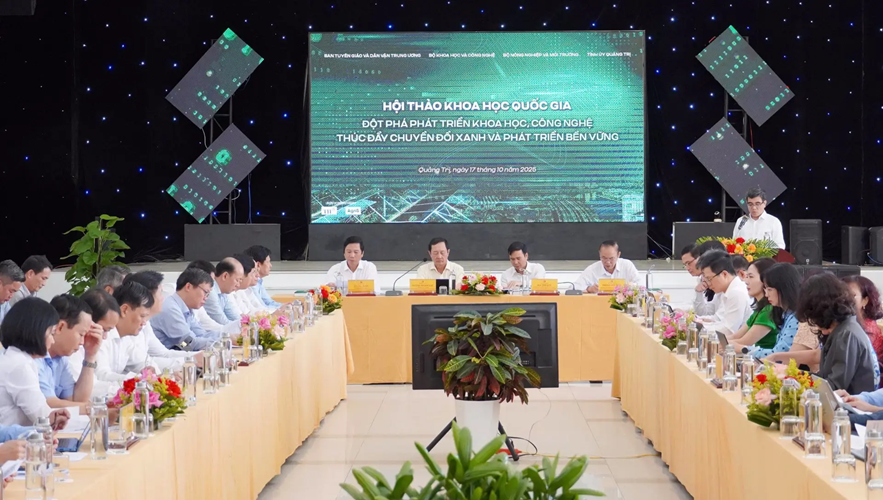
According to Tran Quoc Cuong, promoting collaboration among the “Three houses”: the State, enterprises, and research and academic institutions, is the core approach to expanding Vietnam’s innovation ecosystem. The Ministry is implementing various policies to support enterprises in technological innovation, encourage R&D and technology transfer in clean and renewable energy, and develop the science and technology market, while enhancing domestic capacity for renewable technology localization.
Research institutes and universities are guided to focus on R&D, while enterprises take charge of production and commercialization. Profits generated from commercialization are equitably shared to encourage joint investment in innovation. The State continues to fund basic research and breakthrough technologies through the National Technology Innovation Fund and national-level R&D programs.
The Ministry of Science and Technology also strengthens support for intermediary institutions such as technology exchanges, innovation centers, and business incubators, helping to connect supply and demand, provide technology valuation and advisory services, and ensure transparency through the publication of technology readiness levels (TRLs). The State offers financial incentives such as accelerated depreciation for new technologies and R&D cost-sharing, depending on the level of technological adoption.
“With such an innovation ecosystem,” Mr. Tran Quoc Cuong concluded, “Vietnam can not only enhance business competitiveness but also accelerate the green transition, laying the foundation for a knowledge- and technology-based sustainable economy.”
Emission reduction inseparable from scientific and technological advancement
According to Professor Dr. Tran Thi Thanh Tu, Head of the Committee for Science and Innovation at Vietnam National University, Hanoi, achieving high economic growth in tandem with emission reduction requires that science, technology and innovation be placed at the heart of national development policy.
While Vietnam has achieved remarkable growth over the past three decades, its development model still relies heavily on resource exploitation and low-cost labor, leading to declining efficiency, higher emissions, and limited productivity. To escape the middle-income trap and pursue sustainable development, Vietnam must transition toward a knowledge- and innovation-based growth model.
Prof. Tran Thi Thanh Tu stressed that green growth is not merely an environmental goal but a strategic pathway to enhance productivity, quality and national competitiveness. Key drivers include green technologies, renewable energy, smart materials, circular economy practices, and digital transformation.
“Emission reduction cannot be separated from advances in science and technology,” she said. Cleaner production technologies, energy-efficient systems, and AI-driven emission monitoring and big data analytics will enable significant reductions of greenhouse gas emissions across industries, agriculture and services.
Developing the carbon market, green finance mechanisms, and technology innovation incentives is essential for the transition to a low-emission economy. Businesses need stronger support for technological upgrading, green investment, and participation in sustainable development initiatives.
Prof. Tran Thi Thanh Tu also urged Vietnam to expand international cooperation in green technology research and transfer, especially in renewable energy, green hydrogen, resource management, and climate adaptation. Vietnam holds strong potential to leverage knowledge and technology transfer from Japan, the Republic of Korea and Europe, but a clear strategy on technology governance, human resource development, and institute–university–enterprise linkages is needed to ensure long-term effectiveness.
She affirmed that only when science and technology underpin all development policies can Vietnam achieve its dual goals: high-quality economic growth and emission reduction. Innovation-led development is not only the pathway toward Net Zero, but also a long-term strategy to affirm Vietnam’s position as a green and sustainable economy in the 21st century.
Artificial intelligence and digital transformation in climate governance
Associate Professor Dr. Pham Thi Thanh Nga, Director of the Institute of Meteorology, Hydrology and Climate Change (IMHEN), emphasized that achieving green development goals requires the strong application of digital technologies, artificial intelligence (AI), and big data analytics in natural resource monitoring, environmental management, and climate forecasting.
She noted that traditional climate models demand enormous computational power, while AI can dramatically shorten simulation times, reduce energy costs, and improve accuracy. Applying AI to parameterize physical processes, such as convection, radiation, cloud formation, wind patterns, or sea level change, enables the development of flood maps, early warning systems, ecosystem service assessments, and climate policy decision support tools.
IMHEN is advancing machine learning–based model calibration to improve forecasts of heavy rainfall, flash floods, and extreme weather, while developing digital infrastructure and high-performance computing (HPC) to manage growing data volumes.
Assoc. Prof. Pham Thi Thanh Nga outlined five strategic solutions for integrating AI and digital transformation into climate governance in Vietnam: (1) Recognize AI as a core pillar of climate change response, aligned with the National Climate Change Strategy to 2050; (2) Invest in digital infrastructure, particularly HPC systems, GPU clusters, cloud platforms, and open databases. Standardizing and integrating meteorological, hydrological, remote sensing, soil and socio-economic data are indispensable foundations; (3) Develop interdisciplinary human resources combining expertise in climate science, AI, data science, and risk management; (4) Align AI and digital transformation with the Sustainable Development Goals (SDGs) and the Net Zero 2050 commitment, to support urban planning, food–energy–water security, and ecosystem protection, contributing to SDG 2 (Zero Hunger), SDG 7 (Clean Energy), SDG 11 (Sustainable Cities), and SDG 13 (Climate Action). (5) Enhance international and regional cooperation, engaging in global networks such as Climate Change AI (CCAI) and the WMO AI Task Team, as well as partnerships with leading institutions like ECMWF, the UK Met Office, and DeepMind.
She emphasized that with coordinated action in data, infrastructure, human resources, policy and international cooperation, AI will become a strategic instrument, enhancing climate forecasting and early warning capacity, strengthening environmental governance, and supporting Vietnam’s pathway toward a green, resilient and sustainable future.
Science, technology and innovation: The driving force for sustainable national development
In his closing remarks, Deputy Head of the Communist Party of Vietnam (CPV) Central Committee’s Commission for Information and Education Huynh Thanh Dat acknowledged participants’ substantive contributions and innovative insights that enriched discussions on advancing green transition and sustainable development.
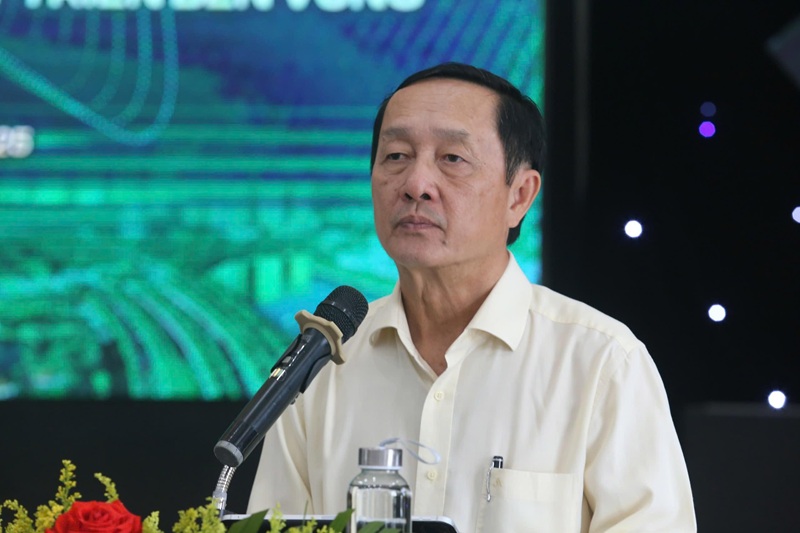
He reaffirmed that science, technology, innovation, and digital transformation are identified by the Politburo as pillars of green growth, key drivers of sustainable development, and essential enablers for Vietnam to achieve net-zero emissions by 2050. Green growth is not only an inevitable global trend but also a pathway to prosperous, equitable, and climate-resilient development.
Scientific and technological progress, particularly digital technologies and AI, opens new opportunities for productivity, quality, and competitiveness, propelling the transition toward a green growth model. Resolution No. 57 reflects Vietnam’s strong political will to transform its development model and assert its role in building a digital, circular, and green economy.
He highlighted that the comprehensive framework of resolutions, strategies, and action plans from the Party, the National Assembly, and the Government establishes coherent institutional foundations to guide and support businesses, research institutes, and innovation start-ups in pursuing green and sustainable growth. Strengthening links between policy, finance, training, science, and markets will form a robust innovation ecosystem, crucial for Vietnam’s transition to a sustainable, knowledge- and technology-driven economy.
In this era of low-carbon transformation, placing science and technology at the core of national development is not only essential but the most viable path for Vietnam to achieve its Net Zero 2050 target and build a self-reliant, green, and sustainable economy.
Khanh Linh - Ngoc Huyen









